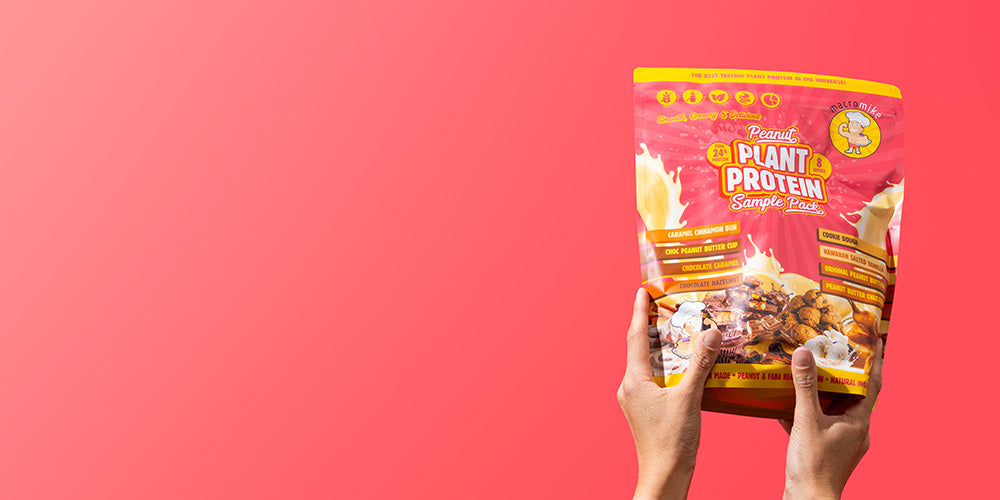Blog Written By Dietician & Nutritionist Helena McDonald
Knowing where to start when it comes to nutrition can be daunting – there’s a lot of information (and misinformation!) out there.
But realistically, it doesn’t need to be complex at all. There are a few key principles to get your head around, but once you’ve done that, building healthy, balanced meals can be a breeze.
In this blog, I’m going to introduce you to macronutrients as a good starting point.
Macronutrients
You may only be familiar with macronutrients in the context of body builders or gym junkies counting all their calories and making sure they hit their macro targets for the day. While you don’t need to be tracking food strictly, or at all, to eat well, it is a good idea for everybody to have an understanding of macronutrients to ensure that your diet is ticking all the right boxes.
First things first – what actually are macronutrients?
When referring to macronutrients, we’re talking about carbohydrates, protein, fats & as a bonus, fibre. All foods are made up of either one or a mix of these macronutrients, and they’re what contribute to our total daily calorie intake. We need a mix of all three across the day (and ideally within each meal) to maintain good health, as they all play different roles in the body.
Protein
We often think of protein in terms of building muscle, but it’s actually got many functions outside of this. Almost every single process within our bodies relies on protein – it’s even what our DNA is made of. It also keeps us full, helps prevent spikes in blood sugar by slowing digestion and supports good recovery from exercise.
The amount you need depends on your activity levels and goals, but a good rule of thumb is to aim for about one quarter of your meal.
Foods: lean meat, chicken, fish, eggs, dairy, tofu, tempeh, edamame, chickpeas, lentils, beans, Macro Mike protein powder
Carbohydrates
Think of carbs like petrol – essential to keep your energy levels topped up and everything running smoothly. It’s actually thought that your brain alone burns through about 130g carbs per day – equivalent to about 8 slices of bread. If you’re regularly exercising, your carb intake can be the difference between a good session and a bad one. And even if you don’t do any exercise at all, carbs are critical to ensure you can concentrate, get through the day feeling good, feel satisfied after eating, and keep your gut healthy and regular.
The type of carbs you choose matters, so make minimally processed, whole grain varieties your go-to (e.g. multigrain bread over white). Again, everybody has different needs, but a decent portion size is about one quarter of your meal – but you’d likely need WAY more if you’re highly active. Plus, note that if you’re fuelling pre-workout, you want to flip the concept of choosing a balanced portion of wholegrains completely and go for a carb-heavy meal that is highly refined and quickly digesting (e.g. white bread with honey).
Foods: bread, pasta, rice, white potato, sweet potato, fruit, dairy, oats, chickpeas, lentils, beans
Fats
There are different types of fats, so focus on getting in the “good” kind, which have benefits for heart health, brain health, hormone function and inflammation. Including a serve of healthy fats in your meal also goes a long way to add flavour, enhance nutrient absorption and keep you full and satisfied. Salmon (and other oily fish) stand out for their incredible omega 3 content, which can be hard to get elsewhere in your diet. Plant based omega 3s like walnuts, chia seeds and flax seeds are also beneficial, but aren’t used by the body in the same way as animal based omega 3, so if you’re plant based or don’t eat fish you may want to look into an omega 3 supplement (speak to a dietitian about this first though). In general, about 1-2 tbsp worth is a good amount to add to a meal.
Foods: extra virgin olive oil, salmon, nuts, seeds, avocado
Fibre
Fibre doesn’t always get classified as a macronutrient, as it doesn’t technically provide calories, but it’s too important not to talk about here. You may be familiar with fibre to help keep your bowels regular, but high intakes of fibre are also linked with all sorts of health benefits and reduced risk of pretty much every chronic disease e.g. cancer, heart disease and diabetes.
The best way to make sure you’re getting enough is to make at least half your meal colourful vegetables (or fruit) and mostly choose minimally processed foods that don’t come from a packet. Plus, the more diversity the better, so aim to have at least three different colours on your plate at main meals, and minimum thirty different types of plants each week.
Foods: vegetables, fruit, wholegrains e.g. oats, quinoa, black, red or wild rice, multigrain bread, freekeh, pearl couscous, buckwheat, chickpeas, beans, lentils potato, nuts, seeds,
We’ve barely scratched the surface of all the ins and outs of nutrition here, but you should now at least have a good handle on the basic components of a well balanced meal.
The magic formula to remember: one quarter carbs, one quarter protein, half colourful vegetables or fruit, and 1-2 tbsp healthy fats.
What does this practically look like?
Breakfast:
Oats + Macro Mike protein powder + mixed berries + natural peanut butter
Lunch:
Brown rice and quinoa mix + tofu + edamame + salad + avocado
Dinner:
Sweet potato + salmon + roasted vegetables + extra virgin olive oil
Next steps?
Take a look at your own diet and check how balanced your own meals are. If you need a hand, scheduling an appointment with a dietitian will take any guesswork out of it and show you how to make simple adjustments so you can easily hit your goals.
Instagram: @nutrition.by.helena
Website: https://nutritionbyhelena.com/































